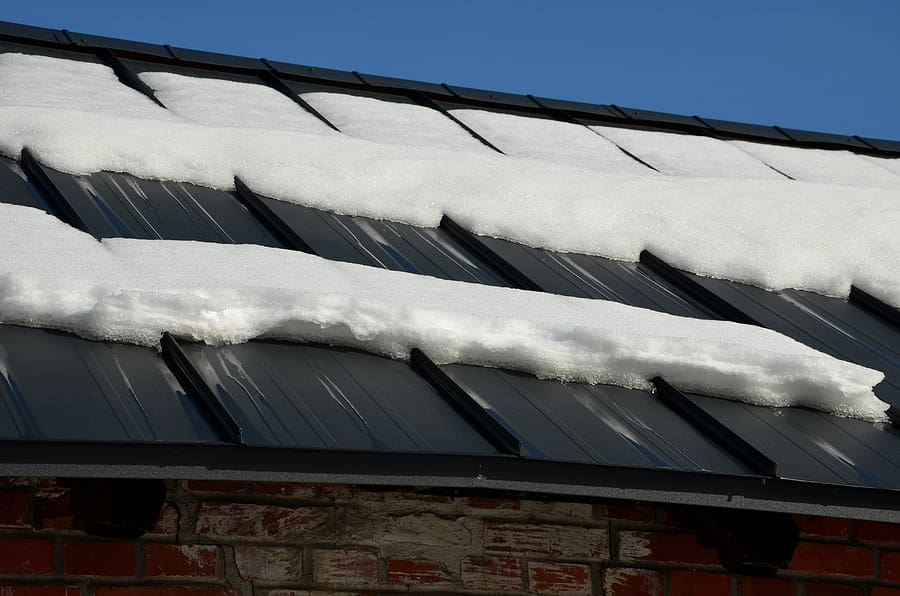As the crisp autumn air rolls in, Ohio homeowners begin reflecting on essential home improvement projects to complete before winter. With the unpredictable and often harsh winter weather on the horizon, fall presents a perfect opportunity to tackle these projects. Among the most critical tasks is assessing the condition of your roof and understanding the costs associated with replacing it if necessary. The average cost of a new roof in Ohio can vary significantly depending on several factors, and having this information is crucial for making informed decisions before the winter months set in.
Since our establishment in 2010, we have accumulated over a decade of experience, honing our expertise in managing roof costs, pricing, and navigating seasonal transitions. We understand the unique challenges Ohio homeowners face and are well-equipped to guide you through this important investment with confidence.
The Importance of Understanding Roof Costs
A new roof is a substantial investment that goes beyond mere aesthetics. While it certainly enhances the curb appeal of your home, its primary function is to protect your home from the elements, especially in a state like Ohio where the weather can be unpredictable. The importance of understanding roof costs lies in the fact that this investment directly impacts your home’s safety, energy efficiency, and overall value.

- Protection Against Weather: Ohio is known for its diverse weather conditions, from heavy snowfalls to rainstorms and high winds. A strong and reliable roof is your home’s first line of defense against these elements. Without a sturdy roof, you risk damage to your home’s structure, interior, and personal belongings. Understanding the cost of a new roof helps you compare the benefits of different materials and designs that can withstand Ohio’s changing weather.
- Energy Efficiency: A new roof plays a crucial role in your home’s energy efficiency. An outdated or damaged roof can lead to drafts, leaks, and poor insulation, causing your heating and cooling systems to work harder. By investing in a new roof, you can significantly improve your home’s insulation, leading to lower energy bills and a more comfortable living environment year-round.
- Increasing Home Value: If you’re considering selling your home in the future, a new roof can greatly increase its resale value. Potential buyers view a new roof as a major advantage, knowing that it’s one less thing they’ll need to worry about. This can also give you leverage in negotiations and help your home sell faster in a competitive market.
Factors Influencing the Cost of a New Roof in Ohio
When calculating the cost of a new roof in Ohio, several factors come into play. Understanding these factors will help you prepare a realistic budget and avoid unexpected expenses.
- Roof Size and Complexity: The size of your roof is one of the most significant factors in determining the overall cost. Larger roofs require more materials and labor, which directly drives up the price. Additionally, if your roof has complex features, such as multiple levels, dormers, or intricate architectural designs, this complexity can increase the cost further. For example, a roof with steep slopes or numerous angles will require more time and skill to install, leading to higher labor costs.
- Material Selection: The materials you choose for your new roof play a crucial role in determining the final cost. Asphalt shingles are the most common and affordable option, with an average cost ranging from $3 to $5 per square foot. However, if you’re looking for a more durable and long-lasting material, such as metal, the cost can increase to $8 to $15 per square foot. Each material provides distinct advantages in durability, upkeep, and aesthetics, making it important to prioritize what matters most for your home.
- Labor Costs: Labor is another significant component of roofing costs. In Ohio, labor costs can vary depending on the complexity of the installation and the contractor’s expertise. On average, labor accounts for about 40-50% of the total price of a new roof. Hiring a reputable contractor is vital, as quality workmanship will save you money in the long run by reducing the likelihood of future repairs or replacements. While it may be tempting to choose the lowest bid, it’s often worth investing in a contractor with a proven track record of delivering high-quality results.
- Permits and Regulations: In Ohio, local building codes and regulations can also impact the cost of your new roof. Before starting any roofing project, it’s important to check with your local municipality to determine if permits are required. These permits ensure that your roof is installed to meet safety and building standards, but they can add to the overall cost. Failing to obtain the necessary permits can lead to fines and potentially costly modifications if your roof doesn’t comply with local regulations.
- Roofing System Components: Beyond the visible materials, a roofing system includes various components that contribute to the overall cost. These may include underlayment, ventilation systems, flashing, and gutters. Each of these elements plays a crucial role in the roof’s performance and longevity. For example, proper ventilation prevents moisture buildup and extends the lifespan of your roof, while flashing helps prevent leaks around chimneys and skylights. When budgeting for your new roof, it’s important to factor in these additional components to ensure a comprehensive and durable roofing system.
Why Fall is the Best Time to Replace Your Roof in Ohio

Timing is everything in roof replacement, and fall is often considered the ideal season for this important home improvement project. Here’s why:
- Mild Weather Conditions: Ohio’s fall weather is typically mild and stable, providing the ideal conditions for roofing projects. Unlike the extreme heat of summer or the freezing temperatures of winter, fall offers moderate temperatures that make it easier for contractors to work efficiently. This can lead to quicker project completion and reduced labor costs, as there are fewer weather-related delays.
- End-of-Year Discounts: Many roofing companies in Ohio offer discounts and promotions during the fall season as they aim to close out the year on a high note. By scheduling your roof replacement in the fall, you may be able to take advantage of these savings, which can help reduce the overall cost of your new roof. These discounts can be especially valuable if you’re working within a tight budget but don’t want to compromise on quality.
- Winter Preparation: Replacing your roof in the fall ensures that your home is well-prepared for the upcoming winter. Ohio winters can be harsh, with heavy snowfall, ice, and freezing temperatures putting a strain on your roof. A new roof provides better insulation and protection against these elements, reducing the risk of leaks, ice dams, and other winter-related issues. Additionally, a well-insulated roof can help lower your heating costs by preventing heat from escaping through the roof during the cold months.
- Preventative Maintenance: Fall is also the time when many homeowners conduct routine maintenance checks on their homes. While inspecting your roof, it’s important to look for signs of damage or wear that could worsen during the winter. Common issues include missing or damaged shingles, sagging areas, and leaks. By addressing these problems now, you can prevent more significant and costly repairs in the future. A proactive approach to roof maintenance not only saves you money but also extends the lifespan of your roof.
- Enhanced Home Comfort: A new roof installed in the fall can contribute to a more comfortable living environment throughout the winter. By sealing gaps and improving insulation, a new roof helps maintain a consistent indoor temperature, reducing drafts and cold spots in your home. This can make a noticeable difference in your overall comfort and reduce the strain on your heating system.
- Improved Aesthetics and Curb Appeal: Beyond the functional benefits, a new roof also enhances your home’s appearance. Fall is the perfect time to update your roof’s look, whether you’re opting for a classic shingle design or a more modern metal roof. A well-maintained and visually appealing roof can boost your home’s curb appeal, making it stand out in your neighborhood.
Conclusion
Understanding the average cost of a new roof in Ohio is essential for making informed decisions about your home’s protection and value. By considering factors such as roof size, materials, labor costs, and seasonal discounts, you can plan your roof replacement project more effectively. Fall is the ideal time to take action, offering the perfect combination of favorable weather conditions, potential cost savings, and preparation for winter.
Don’t wait until it’s too late—take the time this fall to review your options, consult with local contractors, and get a detailed estimate for the cost of a new roof in Ohio. Whether you’re dealing with an aging roof that needs replacement or simply planning ahead, investing in a new roof now can lead to significant savings, enhanced home comfort, and peace of mind as you head into the winter months.